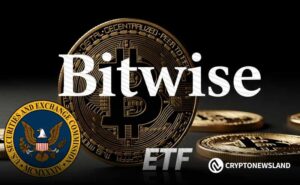Bitcoin’s September Weakness: A Buying Opportunity or a Deeper Downtrend?
- Bitcoin faces technical uncertainty in September 2025, with bearish RSI divergence and key support at $101,300 risking a 20–30% correction if broken. - Macroeconomic risks include delayed Fed rate cuts amid 2.9% core PCE inflation and geopolitical tensions, challenging Bitcoin’s inflation-hedging narrative. - Institutional ETFs (e.g., BlackRock’s IBIT) stabilize Bitcoin but declining dominance to 57.4% signals altcoin season, with Ethereum’s MVRV ratio highlighting distribution risks. - Post-halving supp
Bitcoin’s September 2025 price action has sparked a critical debate: Is the current weakness a temporary correction offering a buying opportunity, or a sign of a deeper, structural downtrend? To answer this, we must dissect technical indicators, macroeconomic shifts, and institutional dynamics shaping the market.
Technical Breakdown: Bearish Divergence and Hidden Strength
Bitcoin’s short-term technicals paint a mixed picture. On the 1-day chart, the price faces resistance at $114,002 and support at $110,467, with RSI at 42.21, suggesting a potential correction is imminent [2]. The RSI’s sub-30 reading in the falling trend channel signals strong negative momentum, while the MACD trend line shows positive momentum with green candles above the signal line, reinforcing confidence in long positions [2]. However, the 14-day RSI at 50% and the price crossing the 9-day moving average indicate a stall in upward movement [4].
A critical question arises: Will Bitcoin hold above $101,300, a key support level identified in broader technical analysis [5]? A breakdown below this level could trigger a 20–30% correction, as suggested by on-chain metrics [4]. Yet, the BoP indicator on the 4-hour chart remains in a positive region at 0.2, signaling short-term buyers are still active [2]. This duality—bearish divergence and lingering bullish momentum—highlights the market’s indecision.
Macroeconomic Uncertainty: Fed Policy and Inflation Dynamics
The Federal Reserve’s September 2025 rate decision looms large. With an 87.2% probability of a 25-basis-point cut according to the CME FedWatch tool [1], the market anticipates a dovish pivot. Historically, Bitcoin has responded positively to rate cuts, as lower U.S. dollar yields enhance its appeal as an inflation hedge [4]. However, core PCE inflation at 2.9% in July 2025—the highest since February—introduces uncertainty [1]. If services inflation (currently at 3.6%) persists, delayed cuts could test Bitcoin’s inflation-hedging narrative [1].
The seasonal “Redtember” pattern, where Bitcoin historically underperforms by -7.5% on average [1], adds another layer of complexity. Yet, this pattern often precedes a “Greentober” rebound with +18.5% average returns [2]. The 2025 context, however, introduces new variables: sticky housing and healthcare inflation, U.S. tariffs on Chinese goods, and geopolitical risks (e.g., the June 2025 Israel–Iran conflict caused a 12% drop in Bitcoin [1]). These factors could either amplify volatility or create a buying opportunity for long-term investors.
Institutional Dynamics: ETFs, Altcoin Season, and Supply Constraints
Institutional adoption has been a stabilizing force. Bitcoin ETFs, including BlackRock’s IBIT with $132.5 billion in assets under management, have reduced volatility by 75% compared to 2023 levels [2]. Corporate treasuries, such as MicroStrategy’s 630,000 BTC holdings, and sovereign wealth funds (which increased Bitcoin exposure by 83% in Q2 2025 [1]) further reinforce its integration into traditional portfolios.
However, Bitcoin’s dominance has dropped to 57.4%, signaling a potential altcoin season driven by institutional interest in high-beta assets [3]. Ethereum’s MVRV ratio of 2.15 and $39.5 billion in leveraged positions highlight widespread distribution risks [4]. While this diversification could weaken Bitcoin’s short-term appeal, the post-halving supply tightening (occurring in April 2024) creates a structural bullish backdrop. Analysts project a price peak between September and November 2025, aligning with historical 520–550-day cycles [5].
Conclusion: Navigating the Crossroads
Bitcoin’s September weakness reflects a confluence of bearish technicals, macroeconomic uncertainty, and institutional reallocation. For investors, the key lies in balancing short-term volatility with long-term fundamentals. A breakdown below $101,300 could test deeper support levels, but institutional buying and the Fed’s dovish pivot may cap downside risks. Conversely, a rebound above $114,002 could signal a resumption of the bullish trend, particularly if October’s “Greentober” pattern materializes.
In this high-stakes environment, diversification into high-utility altcoins and a focus on macroeconomic hedges (e.g., Bitcoin ETFs) may offer the most resilient strategy. As the Fed’s September decision approaches, market participants must weigh the risks of a deeper correction against the potential for a post-Redtember rebound.
**Source:[1] Bitcoin's Response to Fed PCE Data and the Road [2] Bitcoin's Price Volatility and Institutional Influence [4] Navigating September's Crypto Volatility: Strategic [4] Navigating September's Crypto Volatility: Strategic [5] Could Bitcoin's Price Peak in 2025? Analyzing the
Disclaimer: The content of this article solely reflects the author's opinion and does not represent the platform in any capacity. This article is not intended to serve as a reference for making investment decisions.
You may also like
Bitwise Launches Solana Staking ETF on NYSE Offering Direct SOL Exposure and Staking Rewards

Democrat Ro Khanna Proposes Crypto and Stocks Trading Ban for Elected Officials

AI Agents Can Now Access Wallets—Is It Safe?
AI agents may soon control crypto wallets via Coinbase’s x402 protocol. Is this the future, or a security risk?What Is the x402 Protocol?Safety Concerns and Questions

Markets Expect Fed Rate Cut This Wednesday
Traders price in a 97.8% chance of a 25bps Fed rate cut this Wednesday, according to CME data.Why This Matters for Crypto and StocksLooking Ahead to Wednesday’s Fed Meeting
